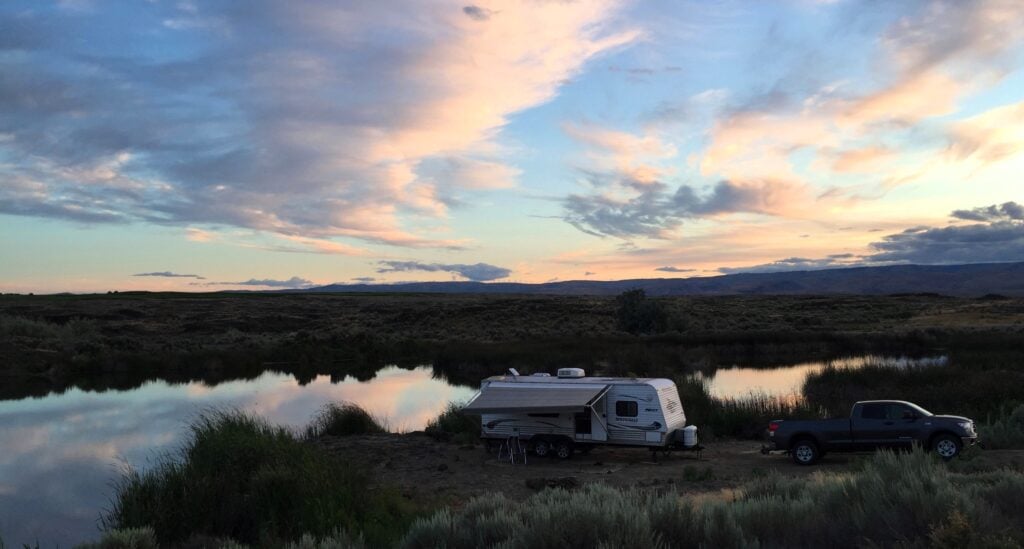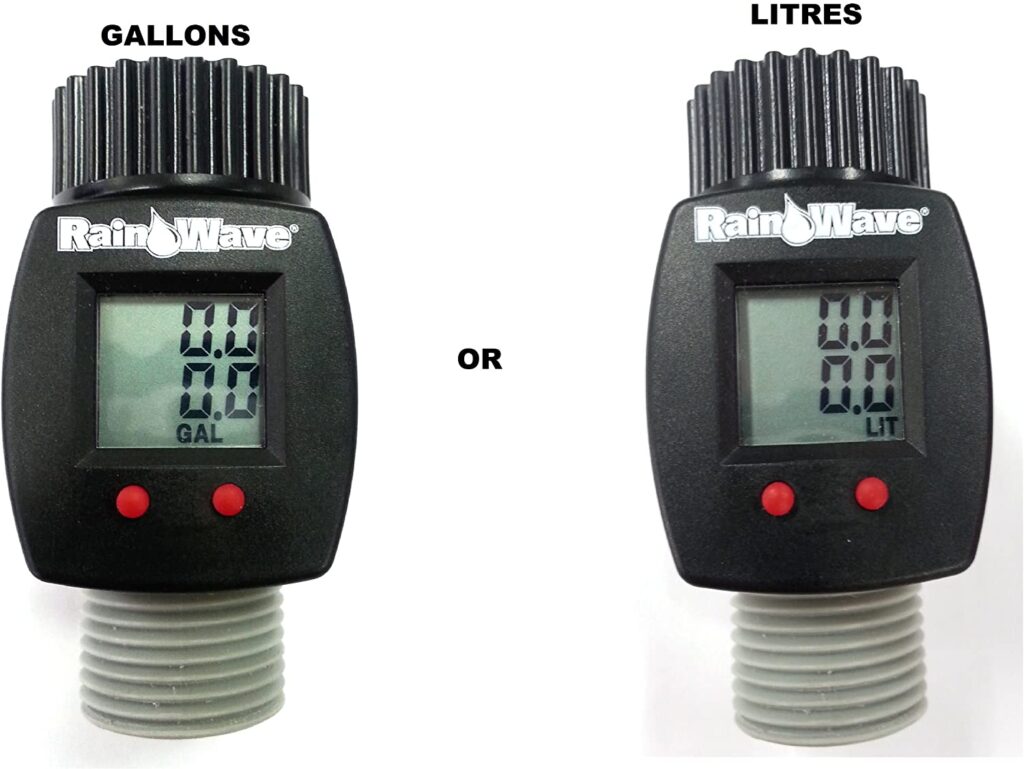
Become a better dry camper and enjoy places like this longer. Photo via author (Dave Helgeson)
How To Determine Your Daily Water Usage
I am often asked by those looking to sharpen their dry camping skills, “How long can I camp without needing potable water, propane, to dump my tanks, etc?”
I always say it depends on what you have for an RV, but I also let them know potable water will most often be the limiting factor.
Typically, I suggest the tips below to determine how much potable water will be used during activities that consume a lot of water like showering or washing the dishes. Then, I tell them to divide their daily use into their potable water tank capacity or calculate how long they can dry camp before depleting their water supply. I also let them know water tank monitors are notoriously inaccurate and are only to be used as a rough idea of remaining capacity at best.
How much water do you use daily?
- Starting out with an empty gray tank, take a shower or do the dishes. When you are done, catch the contents in a 5-gallon bucket or similar container with one-gallon increments marked down the side. Properly dispose of the wastewater when done.
- Pour a known amount of water into your bathtub or kitchen sink taking mental note of the depth of the water along the side. You can place a reference mark (something removable like tape or pencil) if you feel the need, or better yet create a “dipstick” which will allow you to measure the amount of water run into the tub or sink during future uses. Then the next time you shower or do the dishes, just leave the drain plugged to see how much you used using your reference marks or dipstick.
- If your potable water tank is mounted above the floor where you can see it, determine its true capacity (don’t trust the manufacturer’s brochure) using 5-gallon buckets or another reliable source to measure the volume of water placed in the tank. Once you know the true volume you can just mark the tank with evenly spaced increments down the side of the tank and then divide the volume of the tank by the increments. Example: If you have a 50-gallon tank with ten evenly spaced increments down the side, each increment will represent 5 gallons (50 divided by 10 = 5).
Use a digital flow meter to determine your water usage
However, I just discovered a new method that is much easier and less messy. Use a digital flow meter like the brand shown above. There are two ways to utilize the meter:
- Easiest: With your potable water tank already full, perform the function you want to measure like taking a shower or doing the dishes. When done, refill your tank with the flow meter installed on your fill hose to see how much water (in gallons or liters) you used. Note: While you could do the same thing while hooked to city water, actual consumption will vary compared to what you will use via the pump due to the difference in water pressure and flow rates.
- More difficult, but best for serious dry campers: Install the meter on the outlet side of your water pump. Now you can see how much water you use daily from your potable water tank for all functions you perform like showers, dishes, flushing the toilet, etc. You again just divide your average daily use into tank capacity to determine how many days you can dry camp.
Once you become comfortable knowing your usage on the different individual items and overall daily use, you can just fill the potable water tank at the beginning of an outing and then just watch the running total on the meter.
If you have a 50-gallon tank you will know it is nearing time to break camp in search of a spigot when the meter says you have consumed 45 gallons leaving only 5 gallons in the tank.
Learning your daily water consumption habits, just another adventure in RVing. Also check out our previous article on How To Determine Your RV Power Needs.


I bought a plastic flow meter like the one shown. WHILE it worked, I was very happy with it. On about the sixth time using it, the plastic failed and the meter fell apart. Of course this was WELL after the return period. LOTS of other users have reported similar experiences. I’d LOVE to find a BRASS flowmeter that doesn’t cost the earth and moon.
Have you done any gray water purification processes in your articles?
Phil,
I haven’t – are you thinking purifying it for reuse like flushing the toilet or purifying it enough to dispose of it like dishwater?
Agree. I bought a few of them. I kept one on the discharge pump outlet and one on the fill house for the freshwater tank. Them kept breaking. After buying four of them I bought a much better meter. It was a lot more expensive but it is not a cheap plastic meter that breaks every 6 months. The one I bought is a DAE200U-75P along with a DAE CO-10 pulse counter (led display). The display can be mounted anywhere and attached to the meter with a Cat 5 cable.
I have a 90 gallon fresh water tank, can stay out 7 days
53 gallon grey water 37 gallon black.
we use paper plates.wash dishes ever 3 day
10 gal. a day for 2 showers 3 gal 3 wash dish
14 showers showers-x 5gal=70gal
3 times wash dish’s x 3gal=……9gal.
total gallons use……………………79
have a 10 gallon reserve has worked for us for years
note 5 gallons is a lot of water for 1 shower
seeing the above numbers you can see 10 gal a day for showers would only have 5 days out
we use these numbers to stay on the safe side
Above, Bob says 90 gallons only lasts him 7 days? That is nuts! We have a tiny 40-gallon fresh tank and can go 2 weeks on that. He should try actually conserving water and cut showers down to a military 3-minute shower. You also don’t need to shower every day if you’re not sweating. Also, urinate outside and only use the toilet for “number 2”. We also use paper plates and cups so no wasted water doing dishes.
Not shower every day?. Remind me not to camp near to you. I just now ran my water hose in the shower for 3 minutes was just at 3 gallons.
Piss out side? another reason not to camp near to you. To me roughing it camping is running out of cocktail ice.
I agree with Bob. However, I’d like to boondock sometime in the desert but the wife is scared of it and even if she could get past that she says it’s boring…oh well, good thing we always go to a beautiful rv park on a river with a marina there too.- Plenty to look at.
With my wife and I both BoonDocking we average about 7 Gallons a day. She needs more water than I do but she has long hair that needs to be shampooed and I am bald. 🙂
We found experience is best. A great way to bet some without risk is to camp with hookups, but not use them until you run out. Whether its water, sewer or power this is a risk free way to learn.